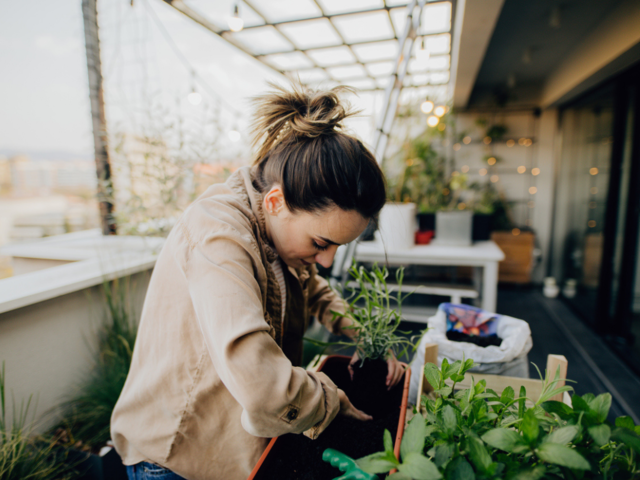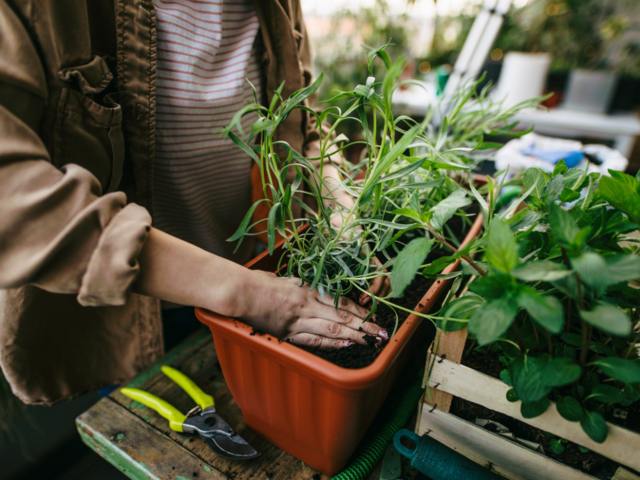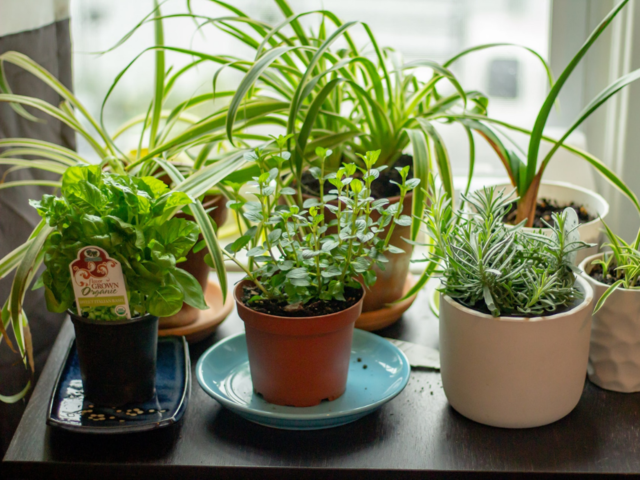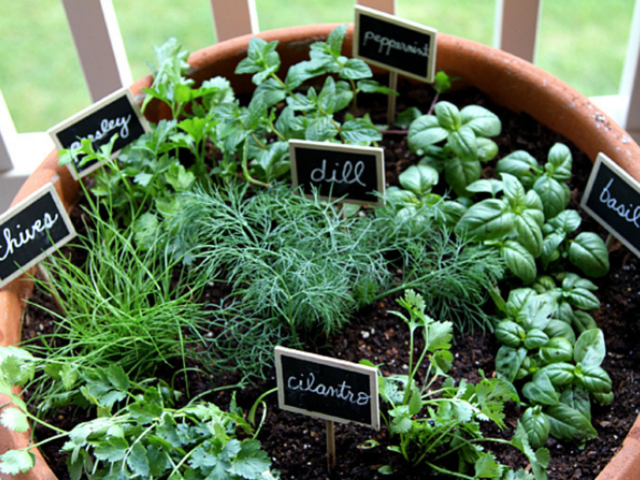Having access to fresh fruits and vegetables is easy if you have your own garden, but what if you live in an urban area? The concept of an urban veggie garden is becoming more popular, and it’s easy to start your own with the right space and the right materials. Even if you’re new to the idea of gardening, you can still start your very own urban vegetable garden at home. Read on for some advice and insight that will inspire you to start enjoying the fruits of your labor without ever having to leave the house.

Image: Stock - Aleksandar Nakic
Where to Set up an Urban Garden
You might be surprised to know that urban gardening can be done anywhere. If you’re lucky enough to have a backyard, designate a section solely to your garden. However, if you live in a small condo or apartment, you can still enjoy gardening at home. Talk to your landlord and see if they’d be willing to allow a rooftop garden in a shared common space. A rooftop garden is fun to maintain, and you can share gardening tips and delicious food with your neighbors. Even a small balcony can be transformed into a garden using pots and small planters. As long as you have enough sunlight and live in a decent climate, you can start a garden anywhere. For those with limited space, consider indoor gardening using a mini greenhouse or pots with a grow light. Whatever you choose, you can set up your garden at home for a fun way to plant, grow, and eat your favorite vegetables.
Materials Required
Once you’ve chosen a location for your urban garden, you’ll need to gather some important materials. While urban gardening is similar to growing a garden in a rural area, there are a few things you may need to do differently. Here's a checklist to ensure a successful urban garden set up:
-
A selection of seeds or small plants that you know will grow in your specific zone
-
Gardening soil (soil in cities may lack the proper nutrients)
-
Pots, large containers, or materials to make a raised garden bed or greenhouse
-
Plant food
-
A watering can or a hose with a sprinkler nozzle
-
Pruning shears, a trowel, and some quality gardening gloves
-
Plant markers to label your fruits/veggies
-
If you have the room, a composting bin is a great addition to an urban garden

Image: Stock - Aleksandar Nakic
How to Plant Veggies
It’s important to know how to plant your vegetables the right way to make sure your new garden is healthy and productive. While you may need to tweak your planting to suit your climate or your location, there are some basics that everyone should know for successful urban agriculture.
-
Keep seeds and small plants separated by type to prevent the spread of disease and overcrowding.
-
Plant your seeds at the time of year based on the specific species so that they grow before it gets too cold.
-
Use a quality garden soil and fill your garden bed or container about halfway full, then cover the seed or roots with soil until it reaches the top.
-
Water your plants regularly, but don’t overwater them or it could cause root rot.
-
Use eco-friendly pesticides to protect your plants from getting destroyed by pests.
-
Cutaway the dead parts of your veggies to encourage new growth.
-
Start with veggies that are easy to grow like herbs, lettuce, and cucumbers. As you gain confidence, you can get creative with new vegetables.

Image: Unsplash
Tips and Tricks
Urban farming is easy once you get the hang of it, but there are a few extra tips and tricks you can use to make the process go smoothly.
-
Grow a mini herb garden in small pots on your kitchen windowsill. Most herbs like plenty of sunlight, and you can grab some as you cook if they’re nearby.
-
Pay attention to how the sun rises and sets to strategically place your plants in an area where they’ll get maximum sunlight.
-
If you’re short on space, consider a vertical garden you can grow on a wall or fence to maximize your harvest.
-
Leafy greens like spinach, lettuce, and bok choi grow well in partial sun or shady areas.
-
Fertilize your veggies regularly with an organic fertilizer to keep them healthy.
-
Use a trellis to support climbing vine veggies like peas, beans, and gourds.
-
Add color to your garden by incorporating some flowers. Grow the flowers in pots so you can move them around as needed.
-
If you can’t use a hose, choose plants that will get enough water via a watering can.
-
Use grow lights and bring your veggies inside during the winter to keep the harvest going.

Image: Unsplash
With a bit of practice and some knowledge about plant life, it’s easy to enjoy a beautiful, fruitful urban garden right in your backyard.
Looking for more gardening or garden design tips and tricks? Check out our blog posts. And if you would like to become a professional garden designer, have a look at our industry-accredited courses.
This is a guest post by Carlos Trejo. The opinions expressed by the guest writer are his alone and do not necessarily reflect the opinions of the Academy. We bear no responsibility for the accuracy of any of the information supplied by the guest writer. This work is the opinion of the blogger.
The links included here are provided as a convenience and for informational purposes only. We bear no responsibility for the accuracy, legality or content of any external site or for any content on subsequent websites, nor does the inclusion of these links constitute our endorsement or approval of any products, services or opinions stated.
